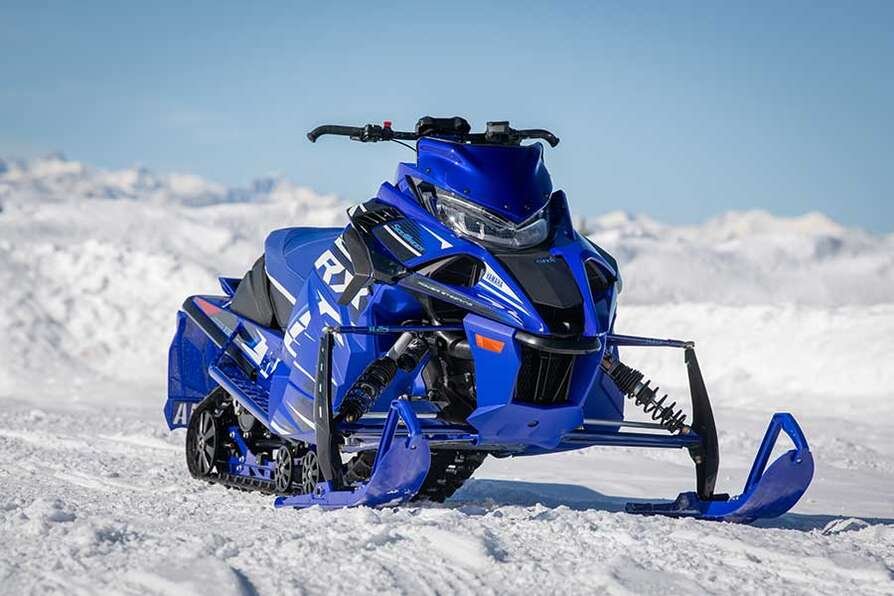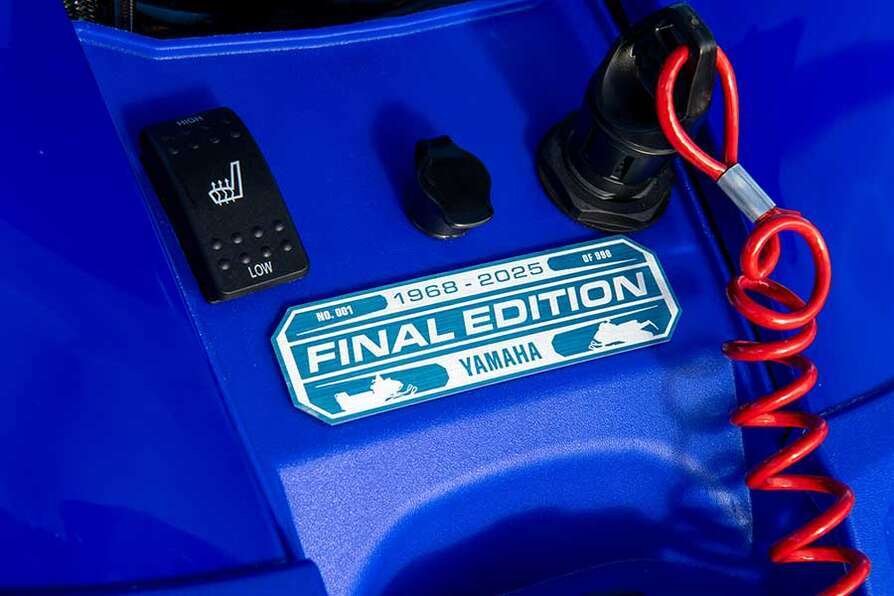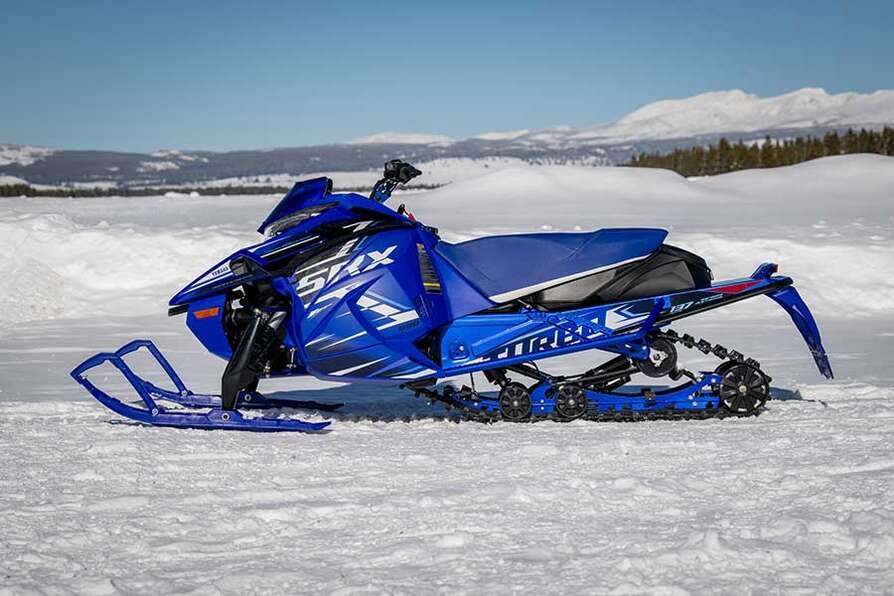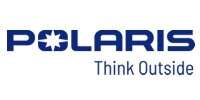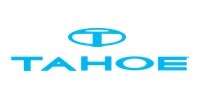Yamaha Snowmobiles

2025 Yamaha SIDEWINDER SRX LE EPS
PRICE INCLUDES $27,399 + $1600 FRT/PDI
The final Sidewinder SRX LE EPS. The fastest snowmobile on snow. This iconic snowmobile holds championships around the world and it holds the respect of even die hard 2-stroke riders. To be an owner of one of these final edition SRXs in traditional Yamaha Blue colour way will be a coveted ttile in the snowmobile community.
| ELECTRIC START | Standard |
|---|---|
| REVERSE | Standard |
| HEADLIGHT | LED |
| DC OUTPUT | Automotive & RCA |
| HEATED SEAT | Standard |
| 20" TUNNEL BAG | Standard |
| ELECTRIC POWER STEERING | Standard |
Yamaha Variable Electric Power Steering
|
Final Edition Badging
|
Fox Zero iQS Shock Package
|
| FRONT SUSPENSION | Independent Double Wishbone |
|---|---|
| FRONT SHOCKS | Fox 1.5 Zero iQS w/SRX Dual Rate Springs |
| FRONT TRAVEL | 10" (254 mm) |
| SKI TYPE | Yamaha Stryke Single Keel |
| REAR SUSPENSION | Dual Shock SR 137 |
| CENTRE SHOCK | Monotube Alum-HP GAS 1.5 |
| REAR SHOCK(S) | Fox 2.0 Zero iQS |
| REAR TRAVEL | 13.5" (343 mm) |
- 998 Genesis Turbo Engine
- Fox Zero iQS Shock Package.
- ARCS Front Suspension
- Low Profile SRX 137 Suspension
- 'Stryke' Single Keel Ski
- Low Profile Ripsaw I Track
- Heated Trail Seat
- Variable Assist EPS
| TYPE | Turbo 4-stroke / 998 cc |
|---|---|
| ENGINE CLASS | Ultra Performance |
| CLUTCH | YSRC |
| FUEL DELIVERY | Electronic Fuel Injection |
| FUEL CAPACITY | 8.9 gal. (33.6 L) |
TOP
|
PERFORMANCE
|
HANDLING
|
COMFORT
|
| TRACK / W X L X H | 15" x 137" x 1.00" |
|---|---|
| TRACK TYPE | Camso Ripsaw I |
| SKI STANCE (CTR TO CTR) | 42" (1,067 mm) adjustable |



